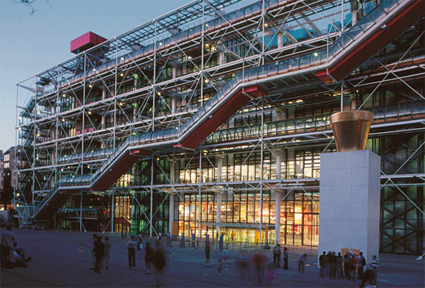
This is the Centre Georges Pompidou, a museum for the modern art in Paris. Its architecture was bold and controversial: in the midst of classical Parisian buildings, it proclaimed its presence with big exposed service elements outside the main columns – red elevators, escalators in clear plastic tunnels, and various color-coded tubes: green for water, yellow for electricity, and blue for air. The “inside-out” approach let it stand out from its neighbourhood, and gave it an uncluttered inner space for artworks and displays, though it also also drawn fierce critics labelling it an oil refinery.

This is the Nike Air Max I. It is the first of the Air Max series, launched almost 20years back in 1987. It was a pioneer in utilising Nike’s air-cushioning unit in the shoe’s sole, and was a popular item for both runners and casual wearers. The series draw a somewhat cult-following over the years, where fans anticipate and collect each year’s models.
Question: Why are these two disparate items appearing in the same post?
Answer: Tinker Hatfield was originally hired by Nike as its corporate architect, in charge designing its offices, showrooms, and retail spaces etc. He was requested to design a shoe – the first Air Max. Being an architect, he naturally brought his architectural background and perspectives in his shoe design process. In the video, he shares he was inspired by the Pompidou in the Max design, most conspicuously the exposed air cushion, which does indeed draw reminiscence of the Pompidou’s ventilation shafts.
As with the case of the Pompidou, Nike’s Head of Marketing was not in favor of the shoe with a hole in the side, and there were concerns about perceptions of leakage and vulnerability. Nike went ahead with it anyway, and as with the case of the Pompidou, it turned out to be a major hit.

